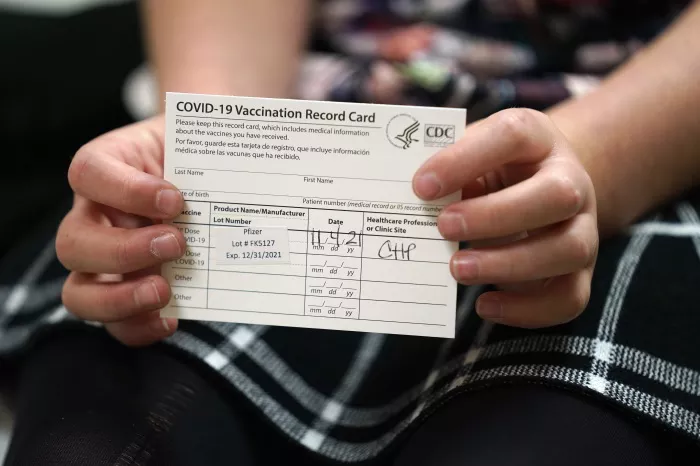Scar tissue in the lungs can pose challenges to respiratory health, affecting both the structure and function of this vital organ. Whether stemming from infections, injuries, or inflammatory conditions, the need to repair scar tissue in lungs becomes paramount for restoring optimal lung function. In this comprehensive guide, we delve into the intricacies of lung scar tissue formation, exploring evidence-based strategies and interventions aimed at fostering effective repair. From therapeutic exercises and pulmonary rehabilitation to nutritional considerations and emerging regenerative therapies, each facet contributes to a holistic approach in revitalizing lungs and mitigating the impact of scar tissue on respiratory well-being.
Understanding Lung Scar Tissue
Before embarking on strategies for repair, a foundational understanding of lung scar tissue formation is crucial. Scar tissue in the lungs arises as a consequence of the body’s response to injuries, infections, or chronic inflammatory conditions. The healing process involves the deposition of collagen fibers, forming scar tissue that can disrupt normal lung architecture. Over time, excessive scar tissue may lead to stiffness, reduced lung compliance, and impaired gas exchange. Recognizing the phases of lung healing provides a basis for tailoring interventions to address scar tissue challenges and promote optimal respiratory recovery.
Therapeutic Exercises and Pulmonary Rehabilitation
A cornerstone in repairing scar tissue in lungs lies in therapeutic exercises and pulmonary rehabilitation programs. These interventions focus on enhancing lung capacity, promoting respiratory muscle strength, and improving overall pulmonary function. Respiratory therapists, in collaboration with healthcare professionals, design personalized exercise regimens that include controlled breathing exercises, aerobic activities, and strength training. These targeted exercises aid in breaking down scar tissue barriers, fostering lung compliance, and mitigating respiratory symptoms. Pulmonary rehabilitation emerges as a comprehensive approach that not only addresses scar tissue but also empowers individuals with the tools to manage respiratory conditions effectively.
Myofascial Release Techniques
Exploring myofascial release techniques becomes instrumental in addressing lung scar tissue restrictions. The fascia, a connective tissue surrounding the lungs, can undergo changes due to the presence of scar tissue, leading to stiffness and reduced lung mobility. Techniques such as chest wall stretches, breathing exercises, and manual therapies aim to release tension in the fascial network, promoting improved lung expansion and flexibility. Incorporating myofascial release into respiratory rehabilitation becomes a nuanced strategy to unravel lung restrictions and enhance the effectiveness of scar tissue repair.
Nutritional Support
Optimal nutrition plays a pivotal role in the repair of scar tissue in lungs, providing essential nutrients for tissue regeneration. Protein, a critical component for lung health, aids in the synthesis of collagen and other structural proteins. Ensuring an adequate intake of protein-rich foods, alongside vitamins and minerals, supports the body’s healing processes. Antioxidant-rich foods, such as fruits and vegetables, contribute to reducing inflammation and promoting lung health. A well-balanced diet becomes a foundational element, fueling lung regeneration from within and fortifying the body against the challenges posed by scar tissue.
Hydration
Hydration emerges as a simple yet crucial strategy in repairing scar tissue in lungs. Optimal hydration supports the mucosal lining of the respiratory tract, maintaining moisture and facilitating effective lung function. Dehydration can lead to increased mucous viscosity, exacerbating respiratory symptoms. Adequate water intake becomes essential in promoting the resilience of lung tissues and optimizing the conditions for scar tissue repair. Balancing hydration with other interventions forms a comprehensive approach to lung health and recovery.
Regenerative Therapies
In the landscape of advanced interventions, regenerative therapies offer pioneering approaches to lung scar tissue repair. Emerging techniques, including stem cell therapies and growth factor applications, aim to harness the regenerative potential of the body. Stem cells, with their capacity to differentiate into various cell types, hold promise in replacing damaged lung tissue and promoting regeneration. Growth factors, administered through targeted therapies, stimulate cellular activities that contribute to scar tissue remodeling. While these therapies are in the early stages of exploration, they present exciting possibilities for enhancing lung healing and mitigating the impact of scar tissue.
Rest and Recovery
Amidst active interventions, the role of rest and recovery in repairing scar tissue in lungs cannot be overstated. Adequate sleep and periods of rest provide the lungs with the necessary time and resources for healing and regeneration. During rest, the body engages in repair processes that contribute to scar tissue remodeling. Balancing physical activity with sufficient rest becomes a strategic approach, preventing overexertion that may impede the delicate process of lung scar tissue repair. Integrating restorative practices, such as relaxation techniques, further supports the holistic healing journey for lungs.
Preventing Complications
Beyond repair, a proactive approach to prevent complications associated with lung scar tissue is essential for long-term respiratory health. Regular monitoring by healthcare professionals ensures early identification of potential issues. Periodic assessments contribute to preventing chronic complications, such as pulmonary fibrosis or reduced lung function. Lifestyle considerations, including smoking cessation and environmental adaptations, become integral components of preventive strategies. Safeguarding lung health for the long term involves a comprehensive and proactive approach that complements scar tissue repair interventions.
Personalized Strategies
Recognizing the unique nature of each individual’s lung health profile underscores the importance of personalized strategies. Tailoring interventions based on factors such as the extent of scar tissue, underlying respiratory conditions, and overall health ensures a targeted and effective approach. Collaboration with healthcare professionals becomes instrumental in developing a personalized plan that aligns with the diverse and multifaceted nature of lung scar tissue repair. Empowering individuals with informed strategies tailored to their specific needs optimizes outcomes and fosters a future characterized by revitalized respiratory health.
Conclusion
In conclusion, the journey to repair scar tissue in lungs unfolds as a comprehensive and informed endeavor, encompassing therapeutic exercises, nutritional support, and cutting-edge regenerative therapies. From addressing lung restrictions with myofascial release techniques to nurturing resilience through hydration and rest, each facet contributes to the overarching goal of restoring optimal lung function. The integration of personalized strategies, backed by scientific understanding and collaboration with healthcare professionals, empowers individuals to take charge of their lung repair journey. As respiratory health is revitalized, the prospect of a future marked by strengthened lungs and improved well-being comes into focus.
[inline_related_posts title=”You Might Be Interested In” title_align=”left” style=”list” number=”6″ align=”none” ids=”3696,3656,3654″ by=”categories” orderby=”rand” order=”DESC” hide_thumb=”no” thumb_right=”no” views=”no” date=”yes” grid_columns=”2″ post_type=”” tax=””]
































